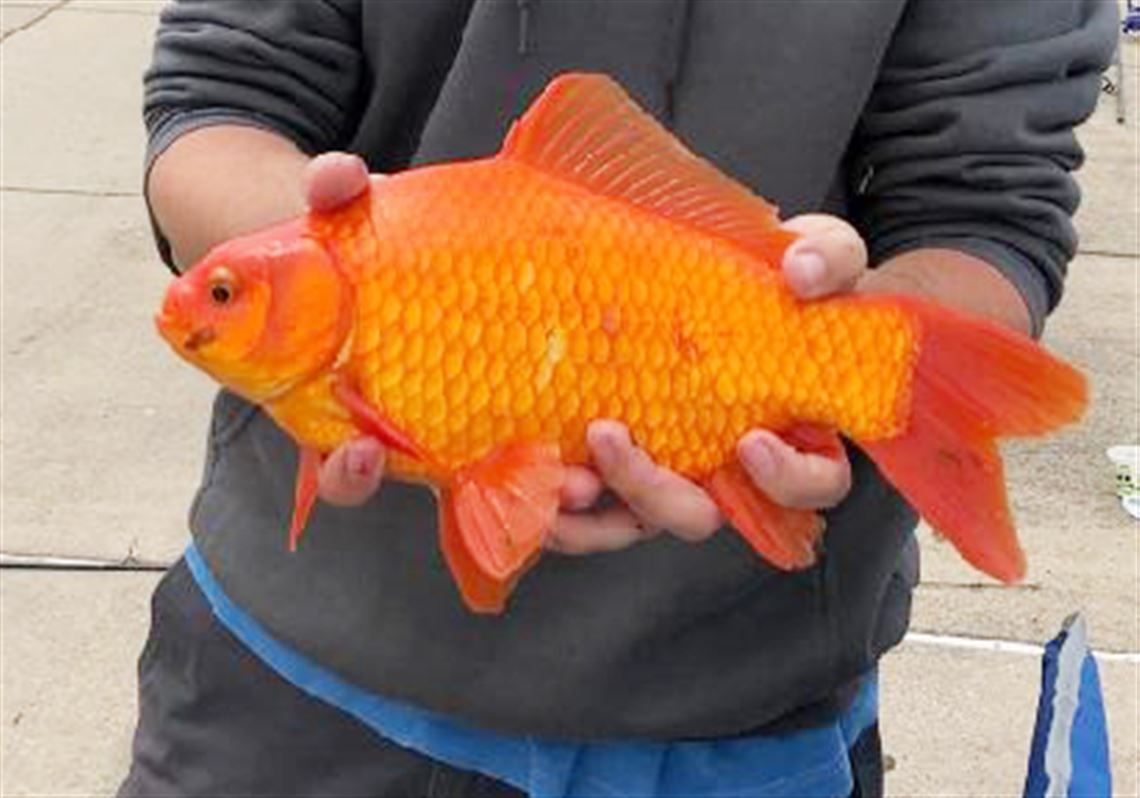In May, T.J. Filus of Jeannette caught and released a 1-foot-long goldfish near the Presque Isle Bay docks on Lake Erie.
An invasive species, goldfish compete with minnows and other small aquatic life for insect larva, zooplankton and decaying plants. Larger goldfish might take a worm or other fish bait. Rather than propagate the species in the wild, the state Fish and Boat Commission recommends destroying goldfish on capture.
Goldfish are not native to any continent. In imperial China about 1,000 years ago, some pale gray East Asian carp caught for food were selectively bred to produce colorful ornamental fish to beautify monasterial water gardens. The emperor of a later dynasty decreed that the color yellow was to be used only by the imperial family, and the flamboyant domesticated fish became a key part of the family’s color-themed rule. Fish breeders not working for the emperor selectively bred red and orange carp.
After hundreds of years of isolated domestication in indoor pools, the colored carp developed other unique physical characteristics including a shorter, fatter body shape, shorter fins and less ability to survive outside the carefully controlled ponds. In Chinese culture, several varieties became symbols of luck and good fortune and were commonly purchased as gifts during the annual Spring Festival and other occasions.
Goldfish commerce spread around the world. In the 1700s they were familiar European pets, and by the 19th century, goldfish bowls had become a part of American home decor.
National Geographic published an account of an ill-conceived federally approved goldfish propagation program.
“In a publicity stunt, from 1884 to 1894, if you were a resident of Baltimore or Washington, D.C, and wrote your congressman, the U.S. Commission of Fish and Fisheries [today the National Marine Fisheries Service] would send you goldfish,” said the magazine. “Some 20,000 were given away each year before the program was discontinued.”
Too often, goldfish that have outgrown the aquarium go down the drain or are dumped into lakes and ponds, reproducing in the wild as a human-made exotic invasive species. The U.S. Fish and Wildlife Service estimates that each year aquatic invasive species, including those evicted from aquariums, cause $120 billion in damage to American waterways. Billions of additional dollars are spent on prevention, detection, control, management, outreach and habitat restoration.
When you’ve lost that loving feeling for your pet, choose a conservation-conscious way to break up. For the squeamish, Fish and Wildlife Service offers these suggestions;
• Help your fish find a safe new home. Donate it to a pet store, school or learning institution, or advertise your fish for free adoption on a web forum dedicated to saving unwanted pets. Local and regional aquarium clubs may point you in the right direction. Be aware that some people may not want their existing fish to share a tank with a stranger that might be sick.
• When your fish finally swims off to the great blue beyond, ask a local veterinarian or pet retailer for suggestions on a humane and respectful disposal. A backyard tribute with a shovel and prayers may be the best way to say goodbye.
First Published: July 30, 2021, 9:55 a.m.
Updated: July 30, 2021, 2:31 p.m.




















